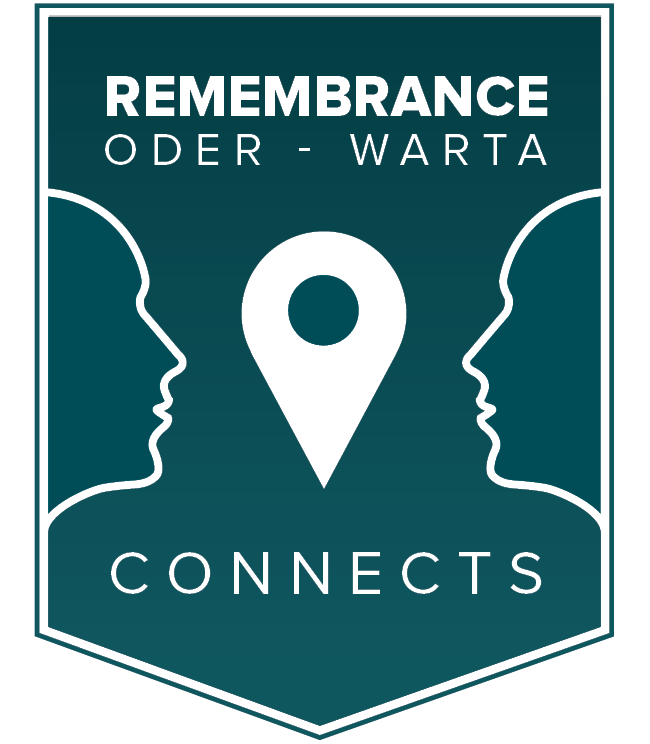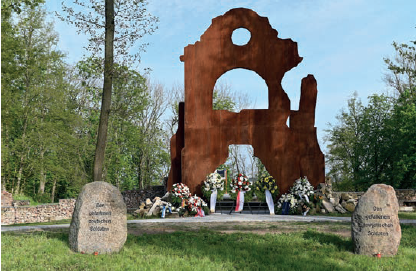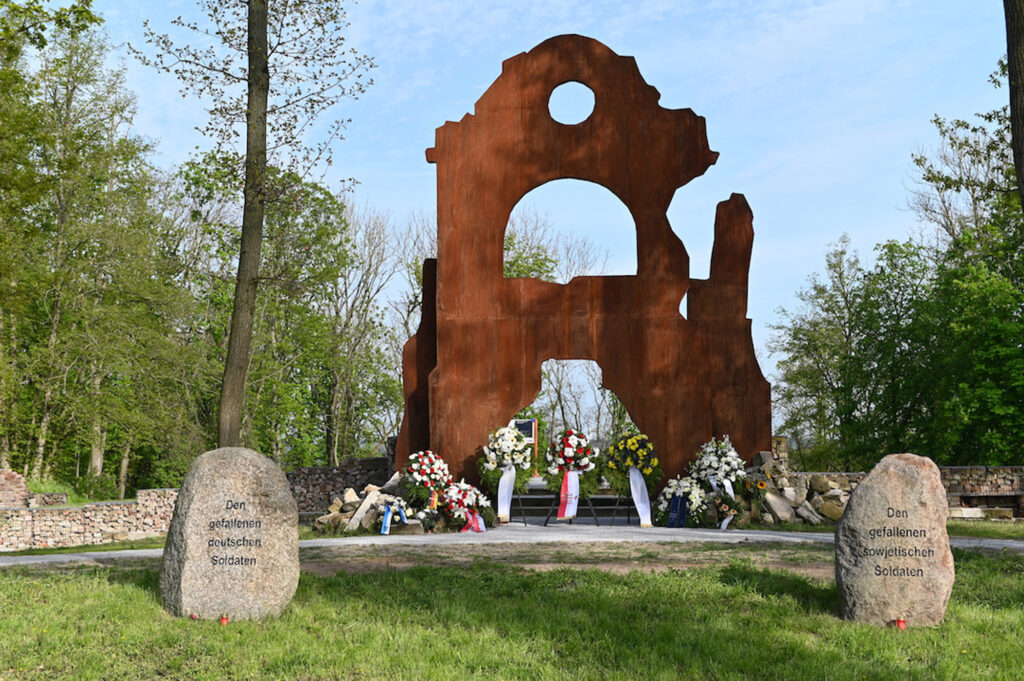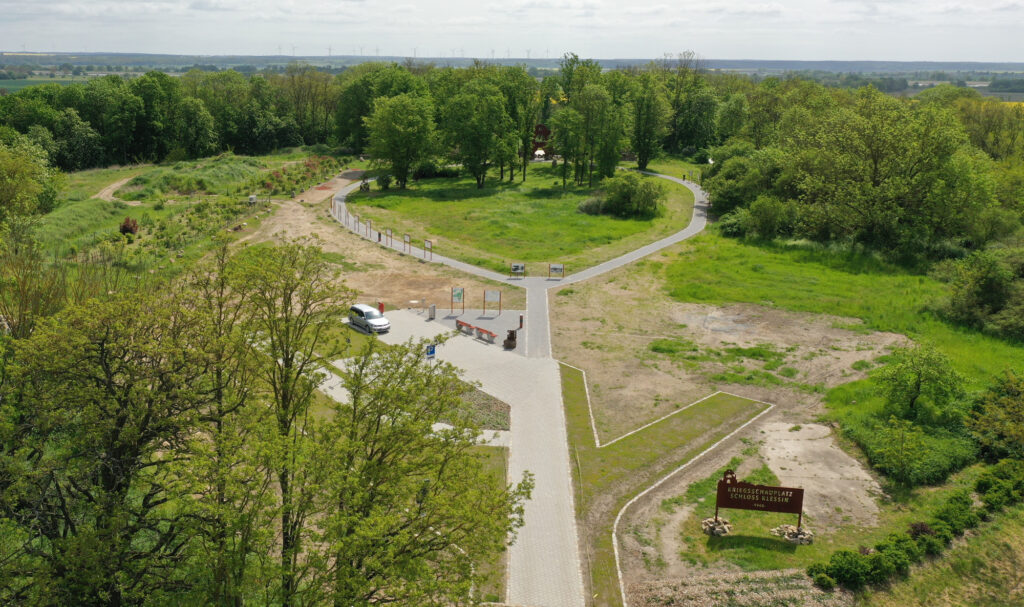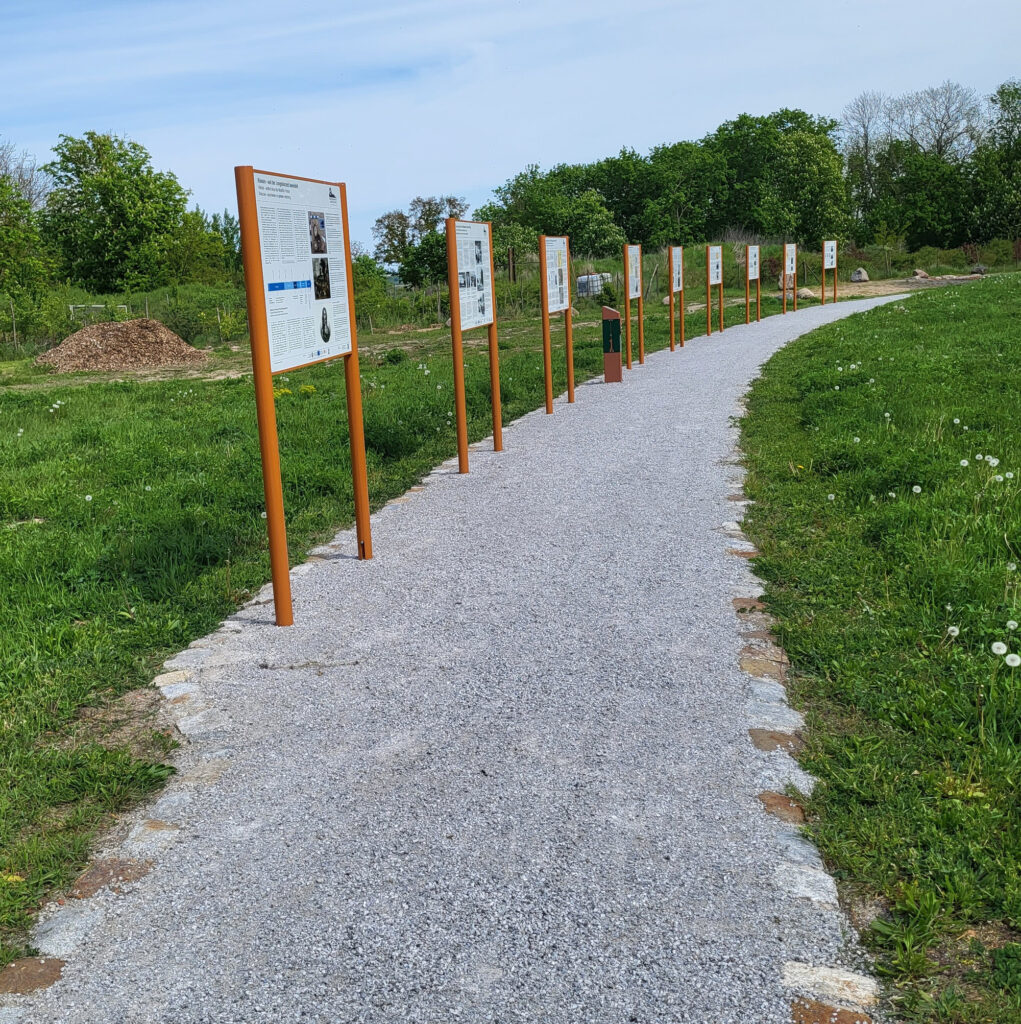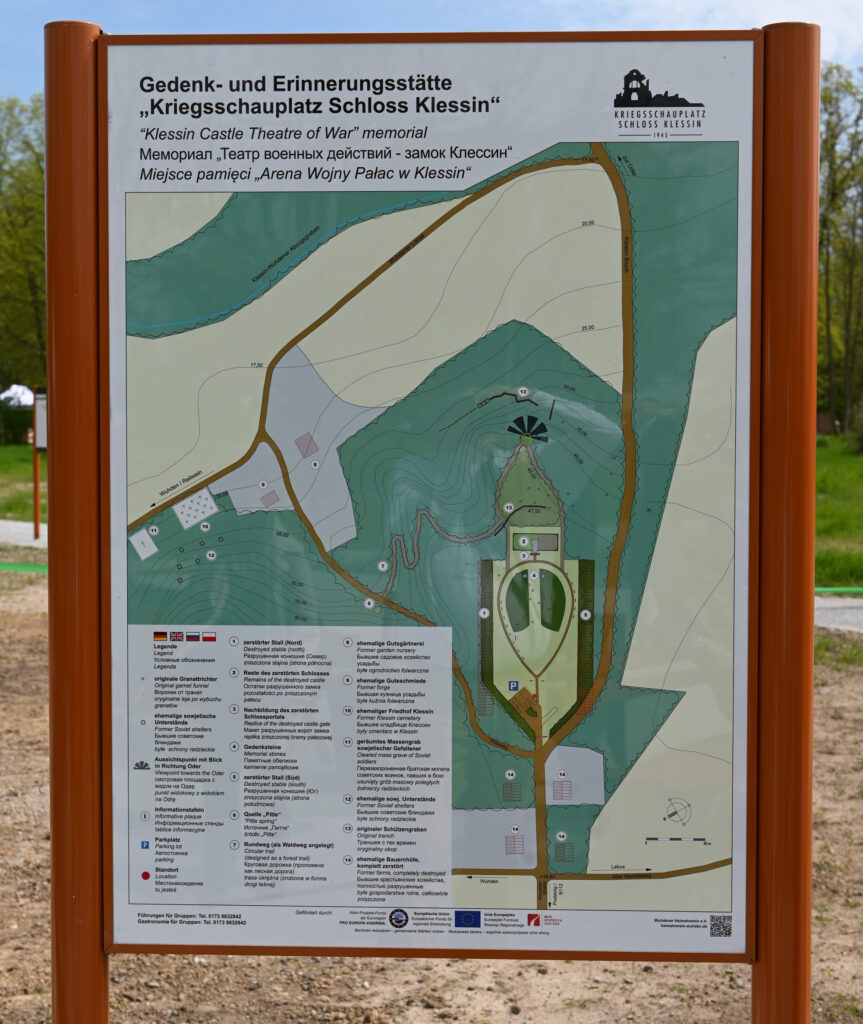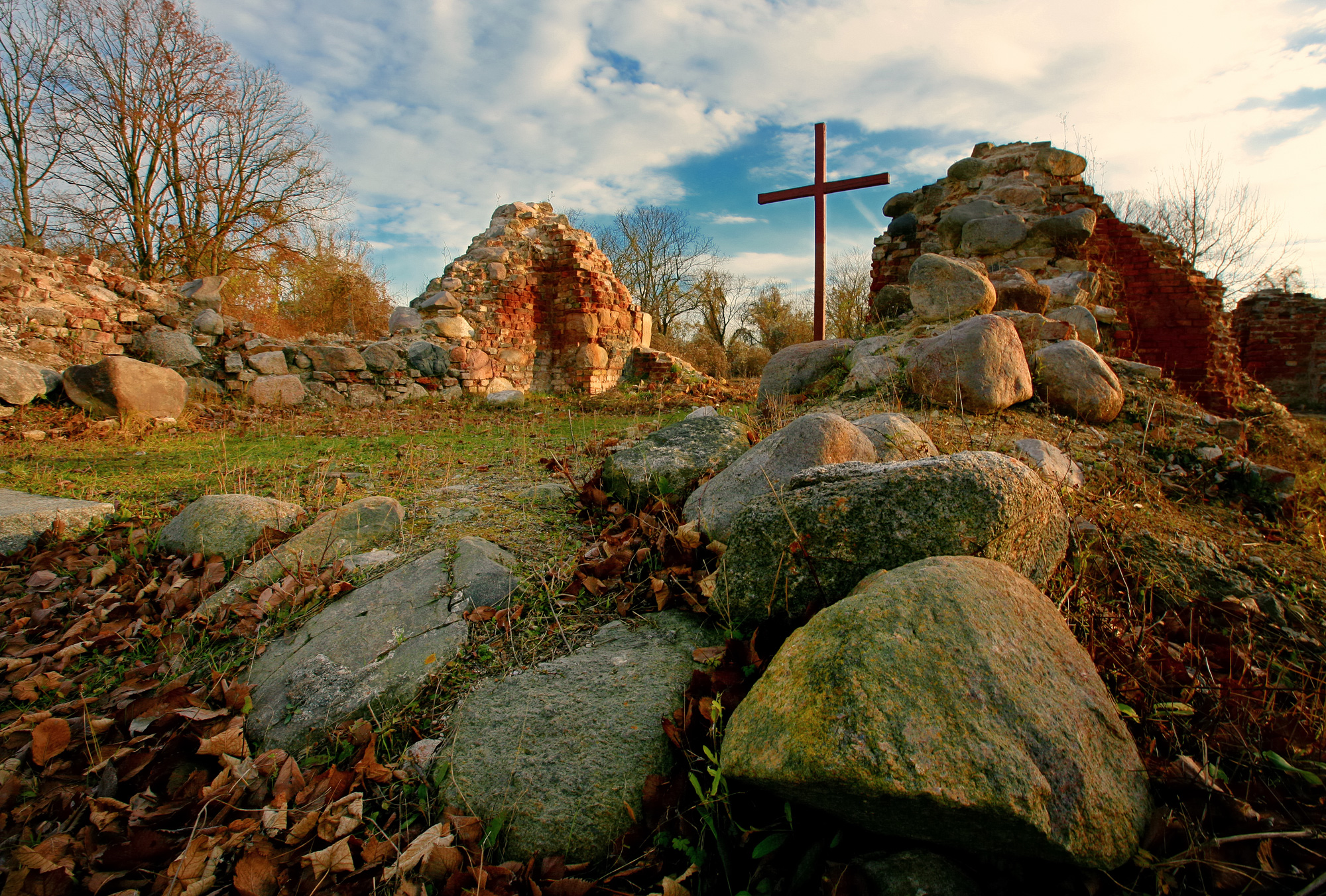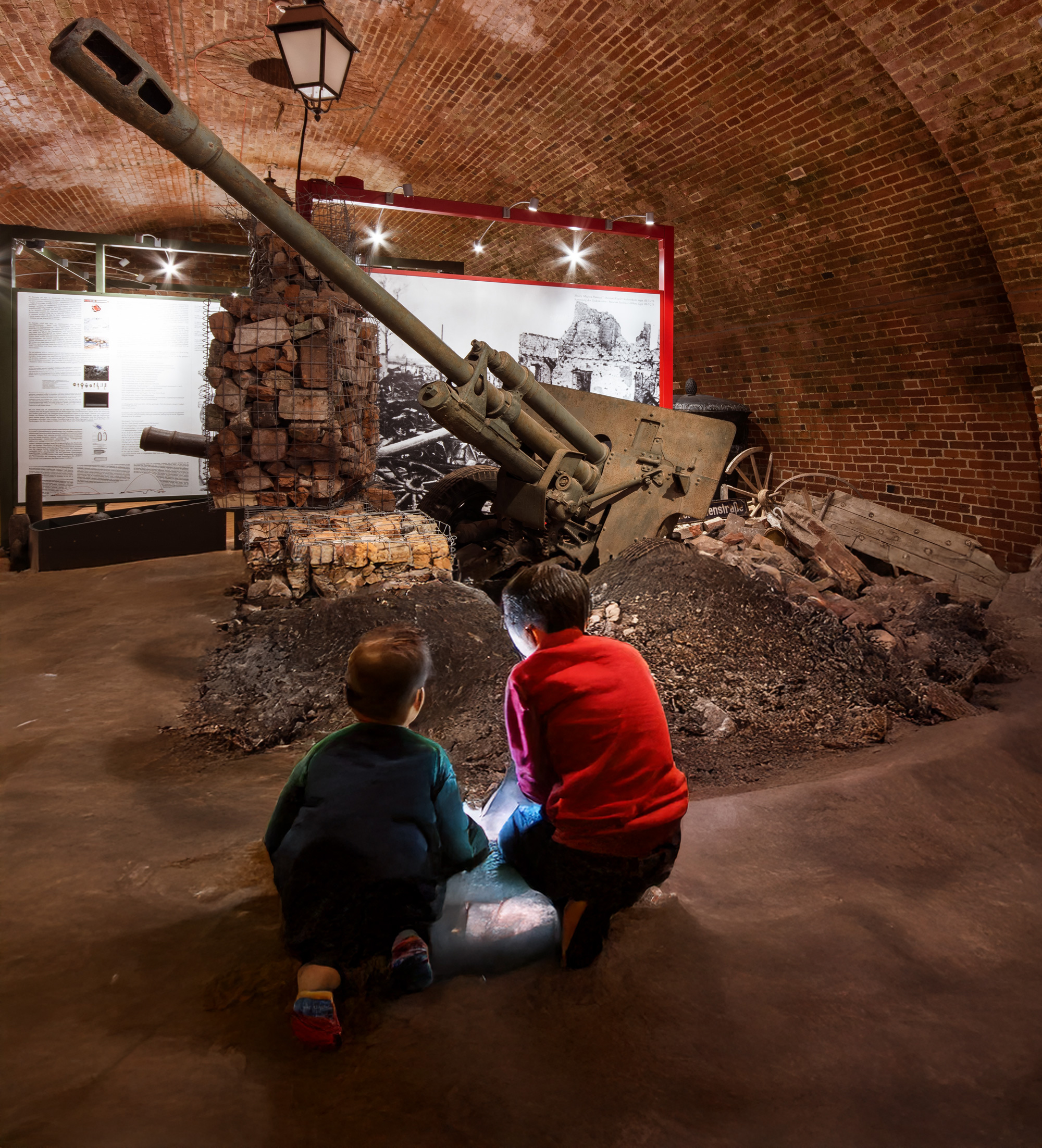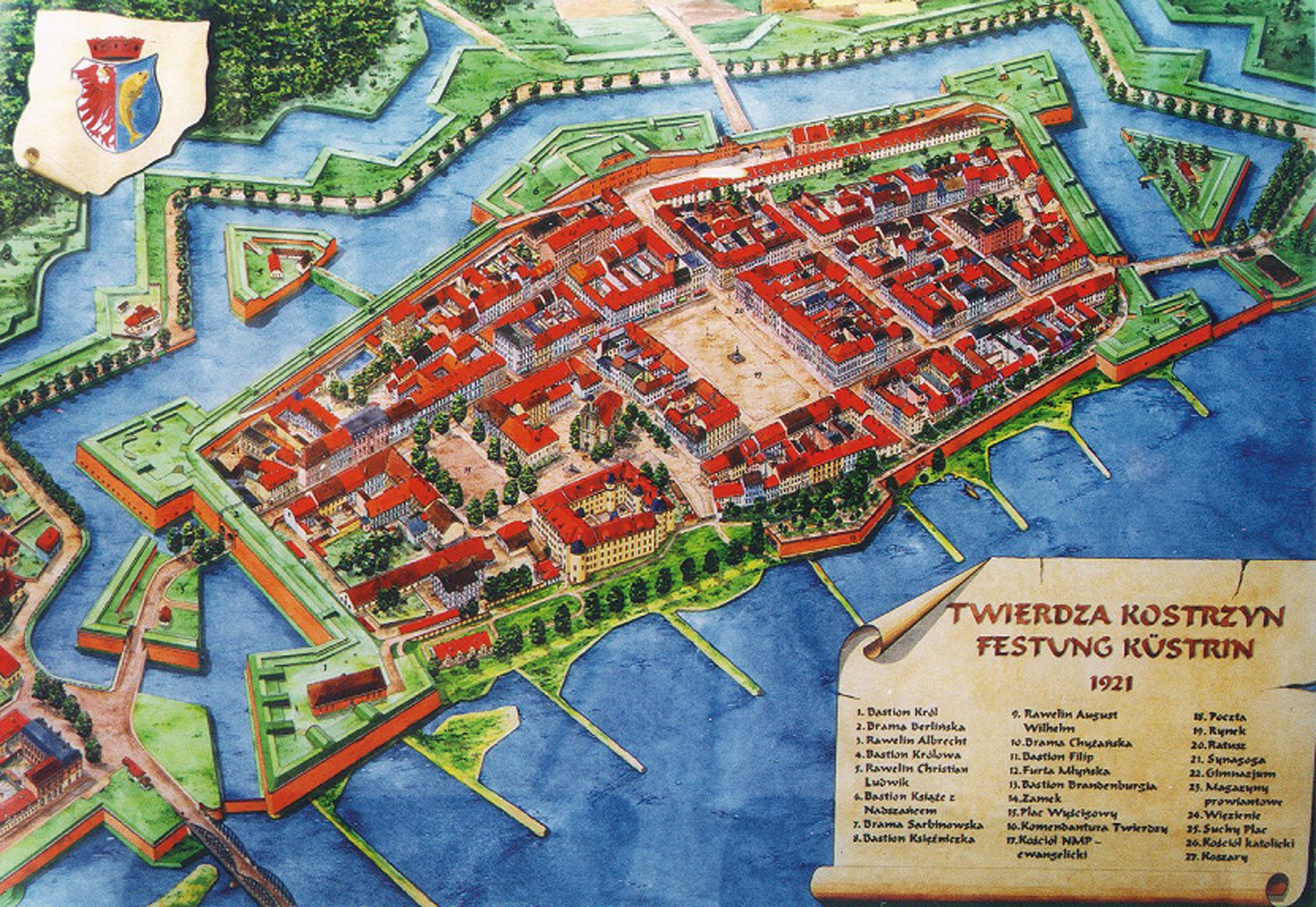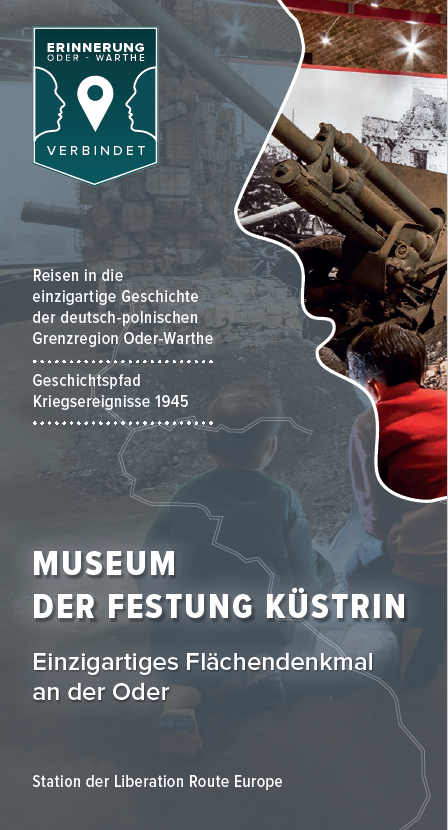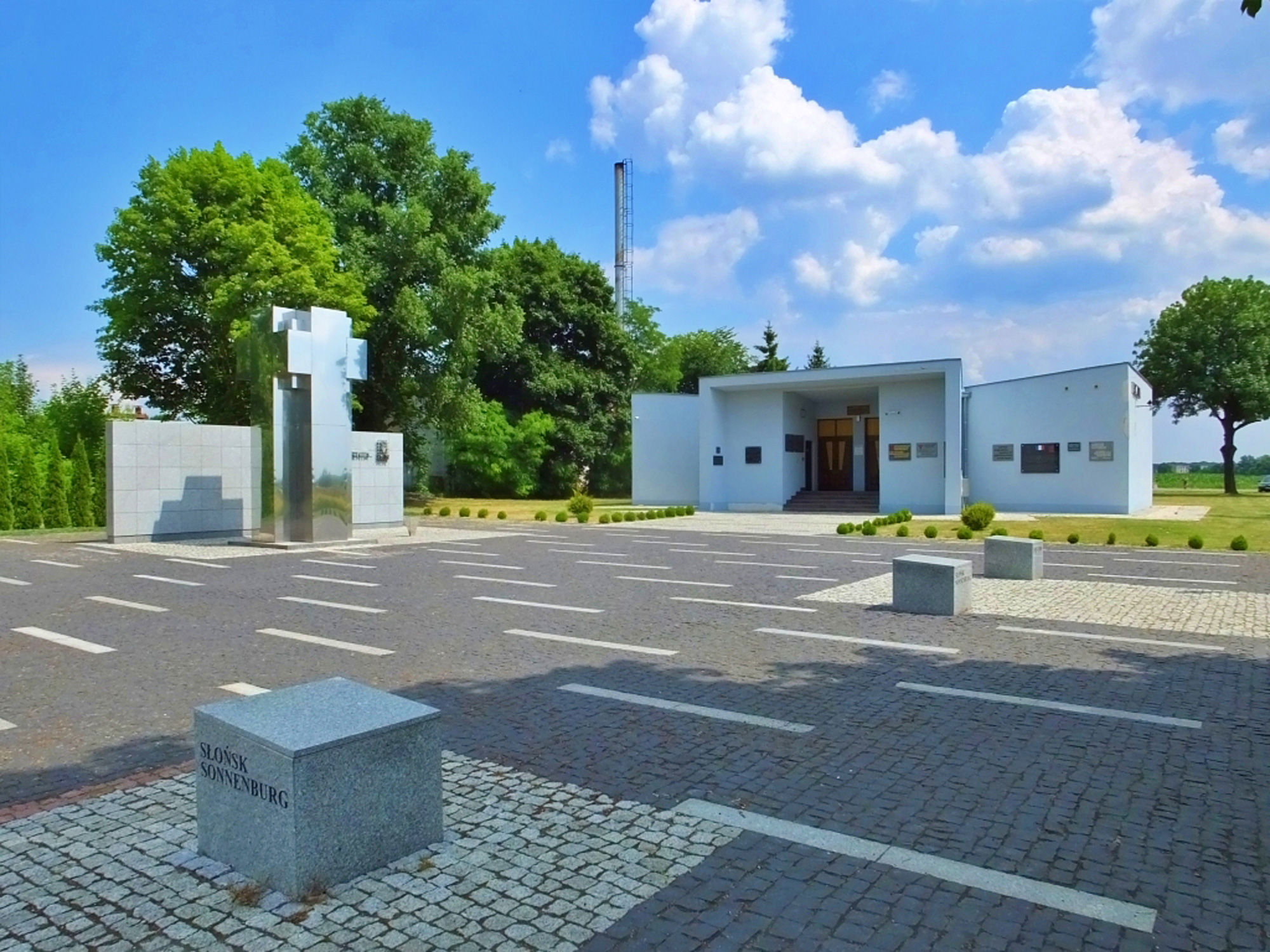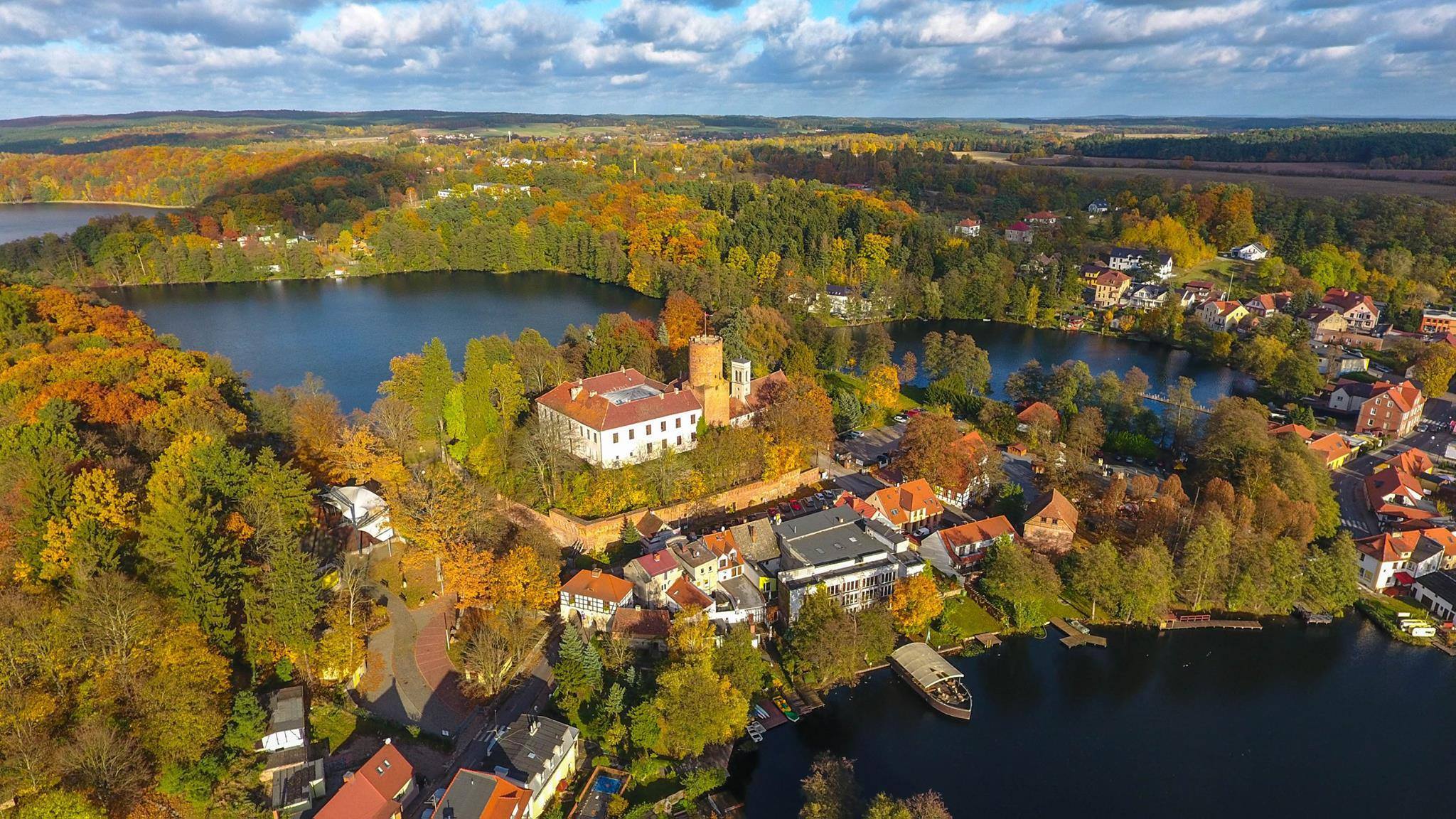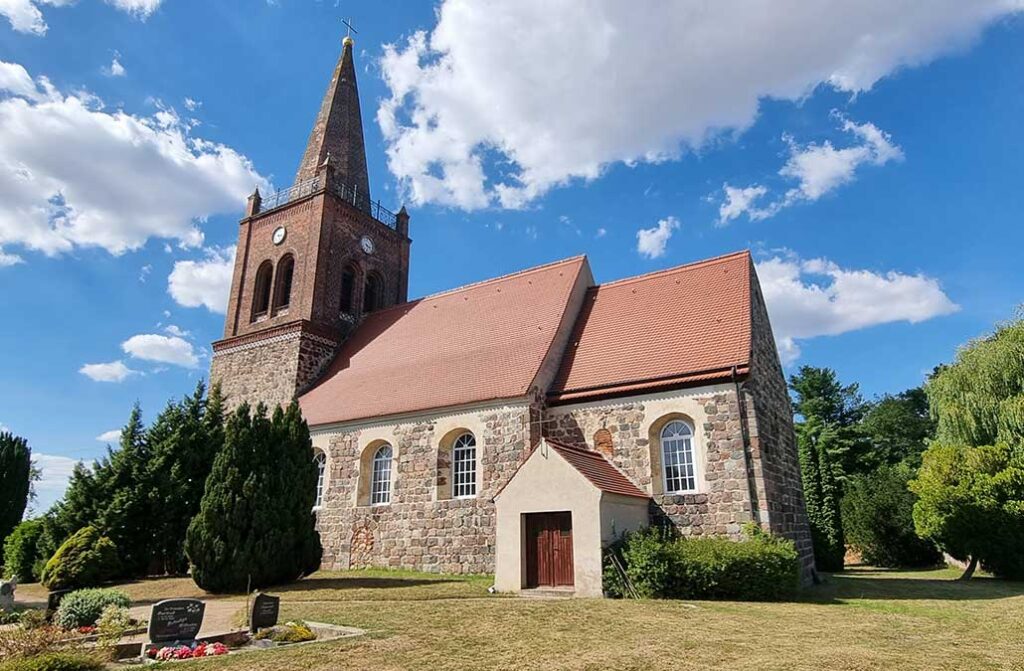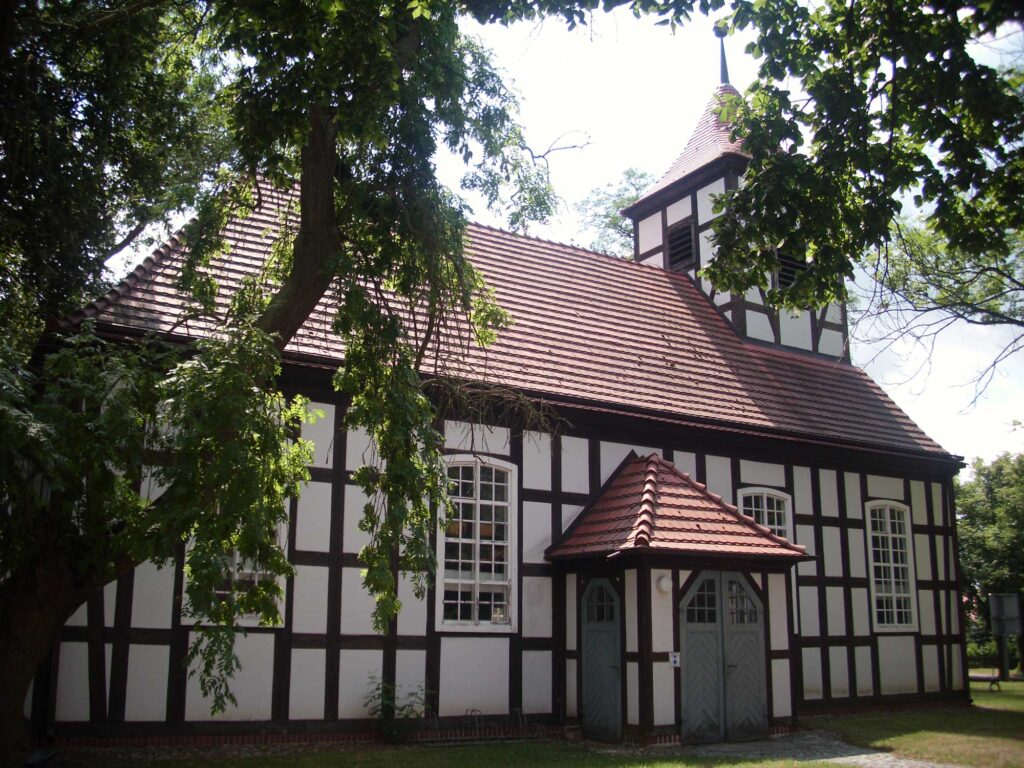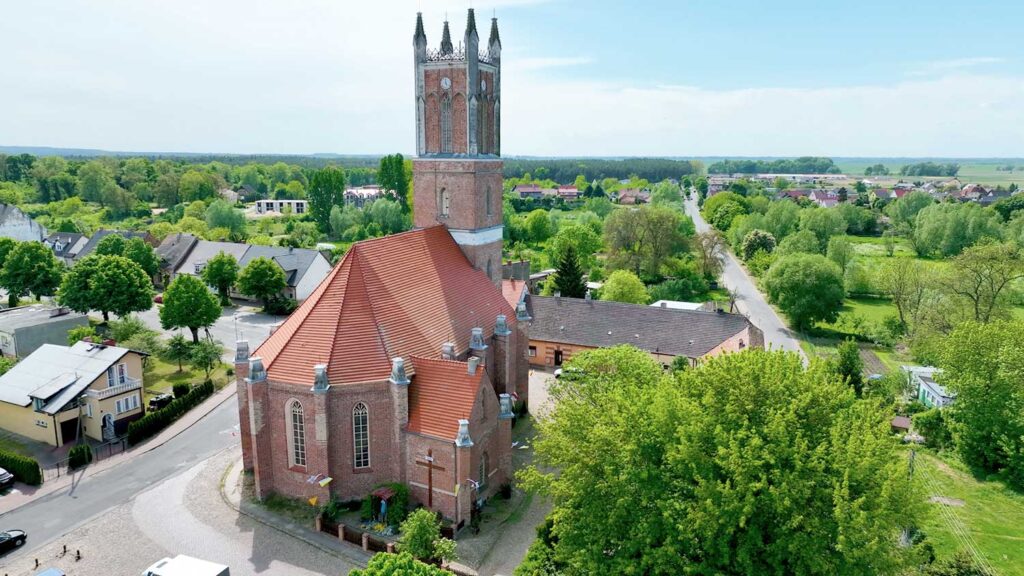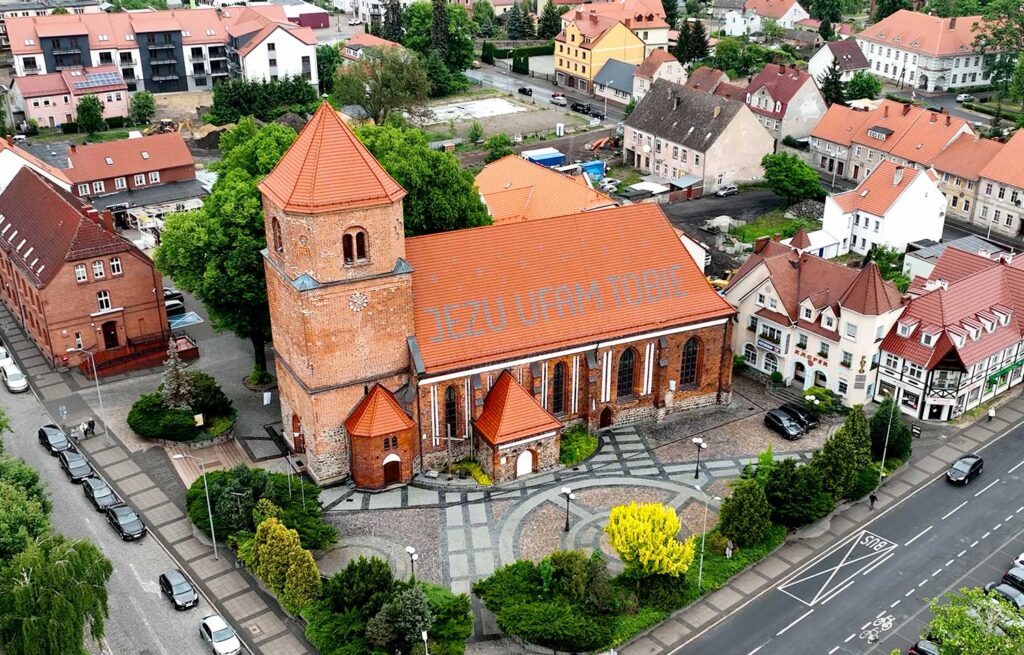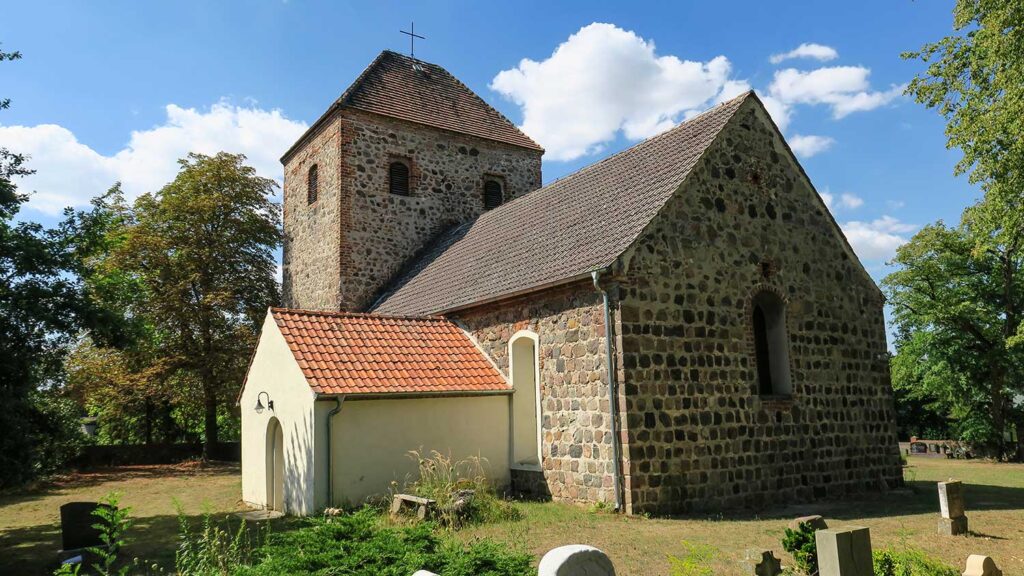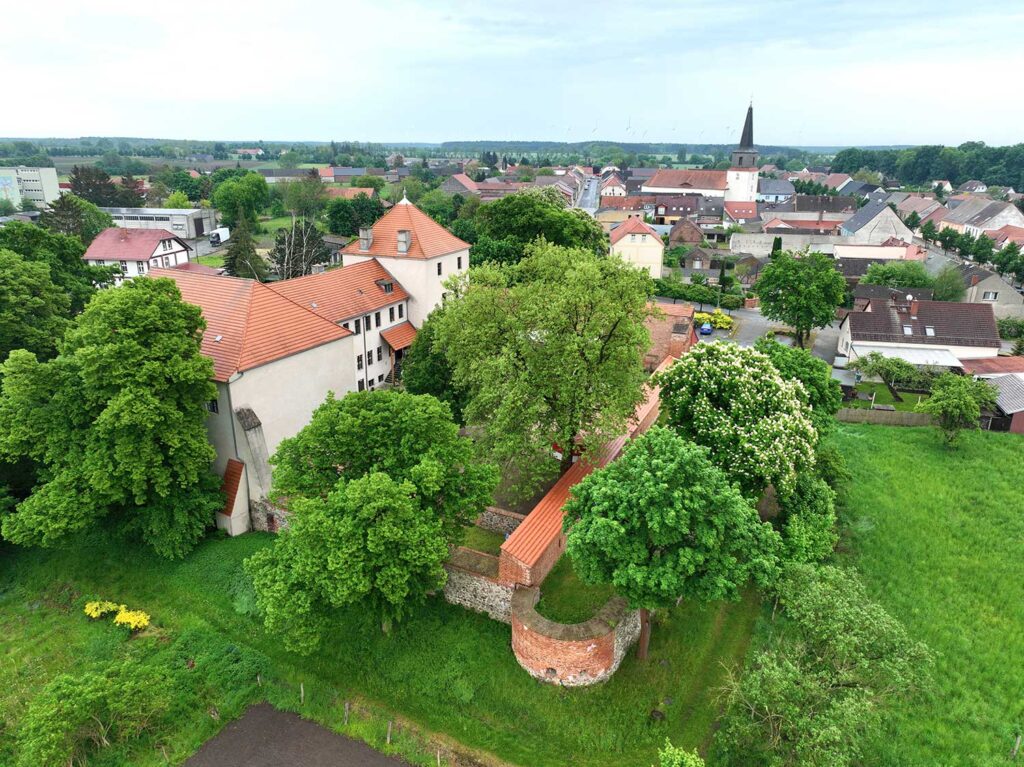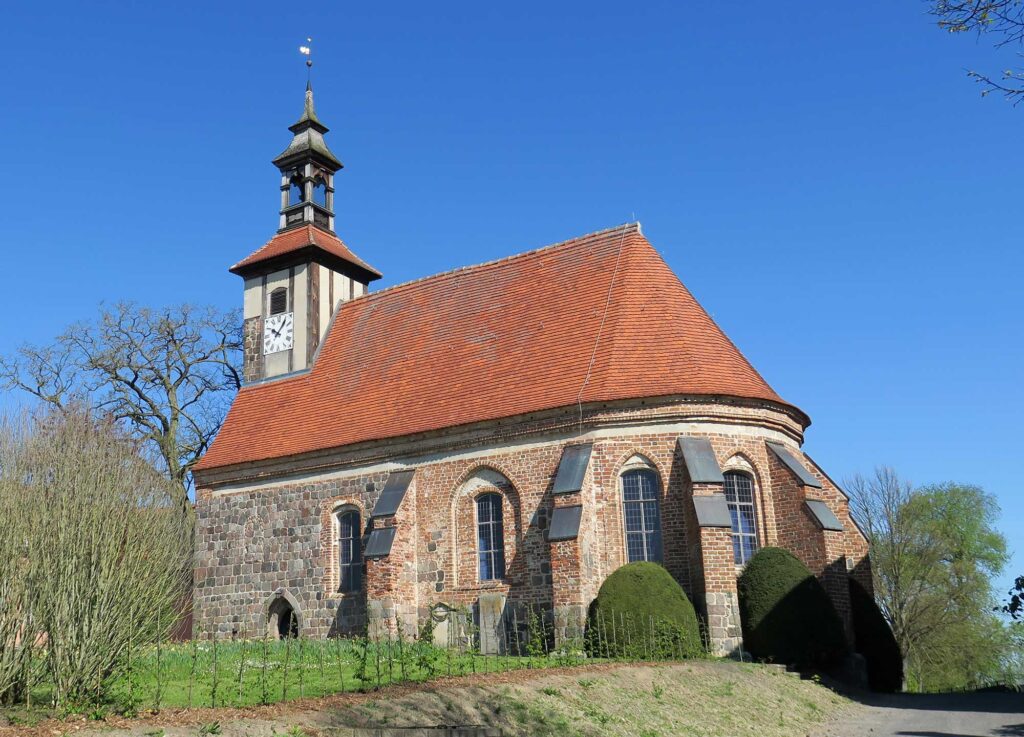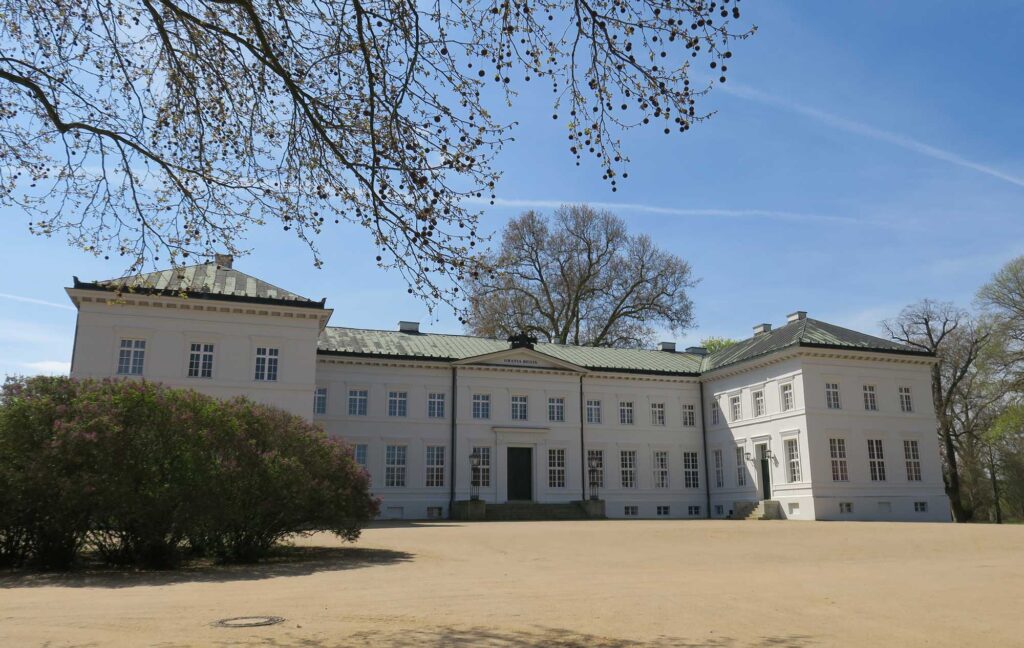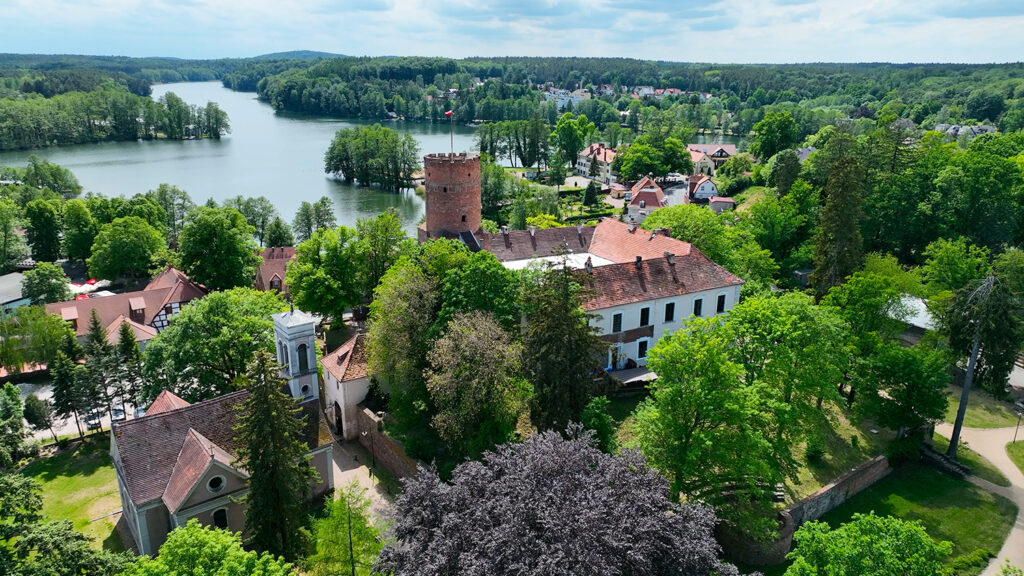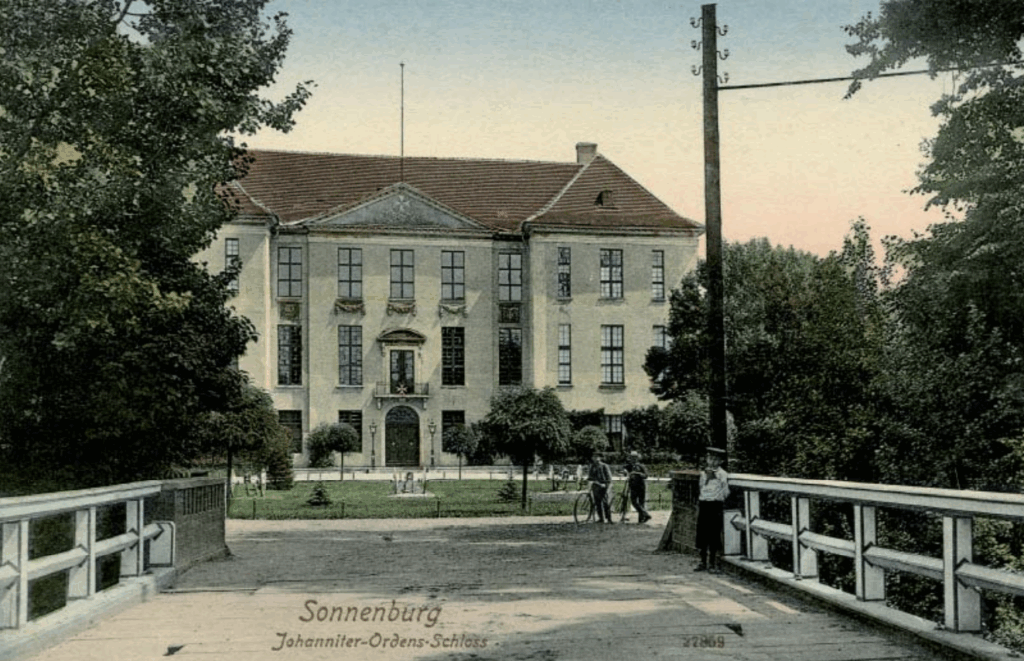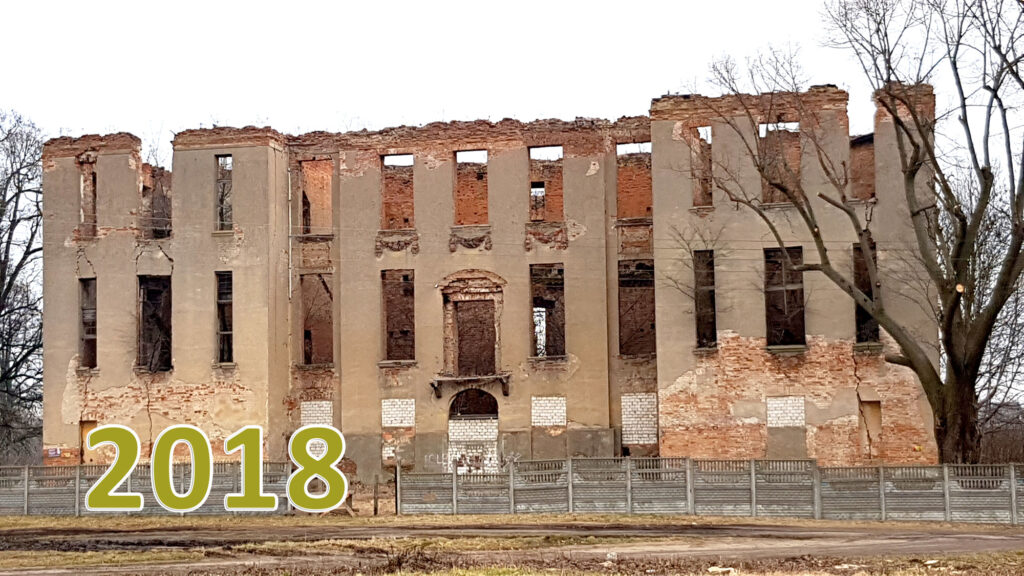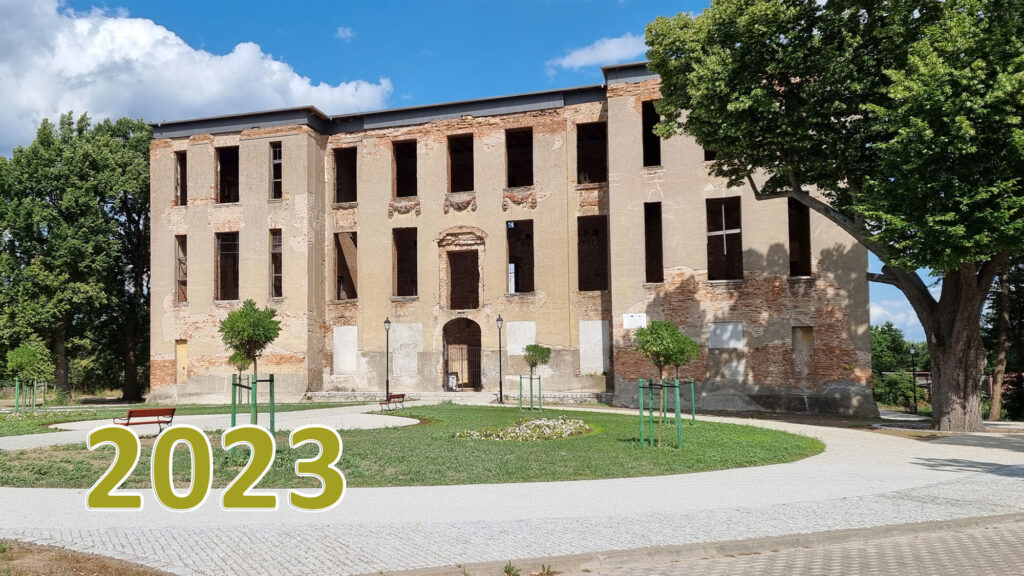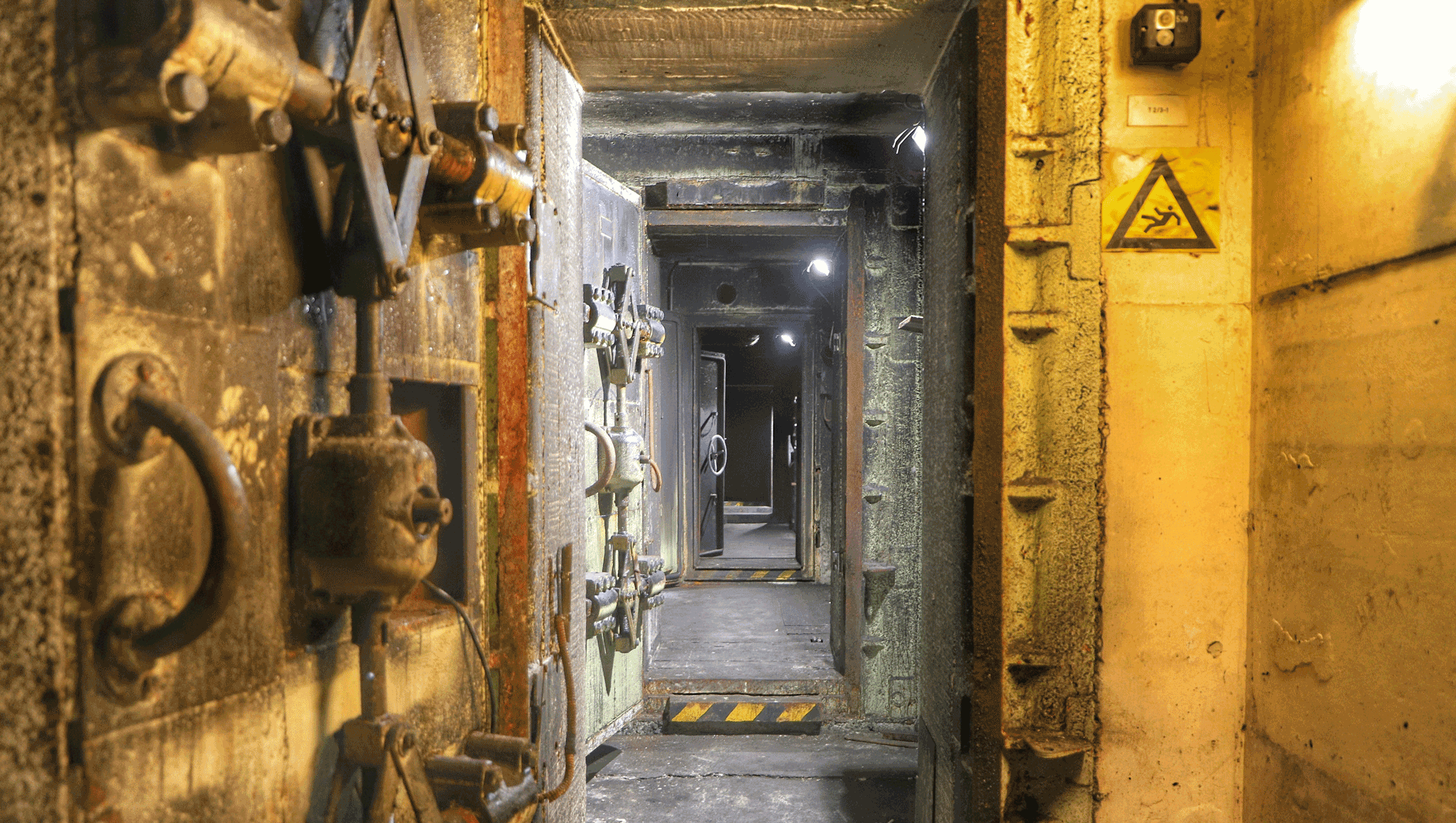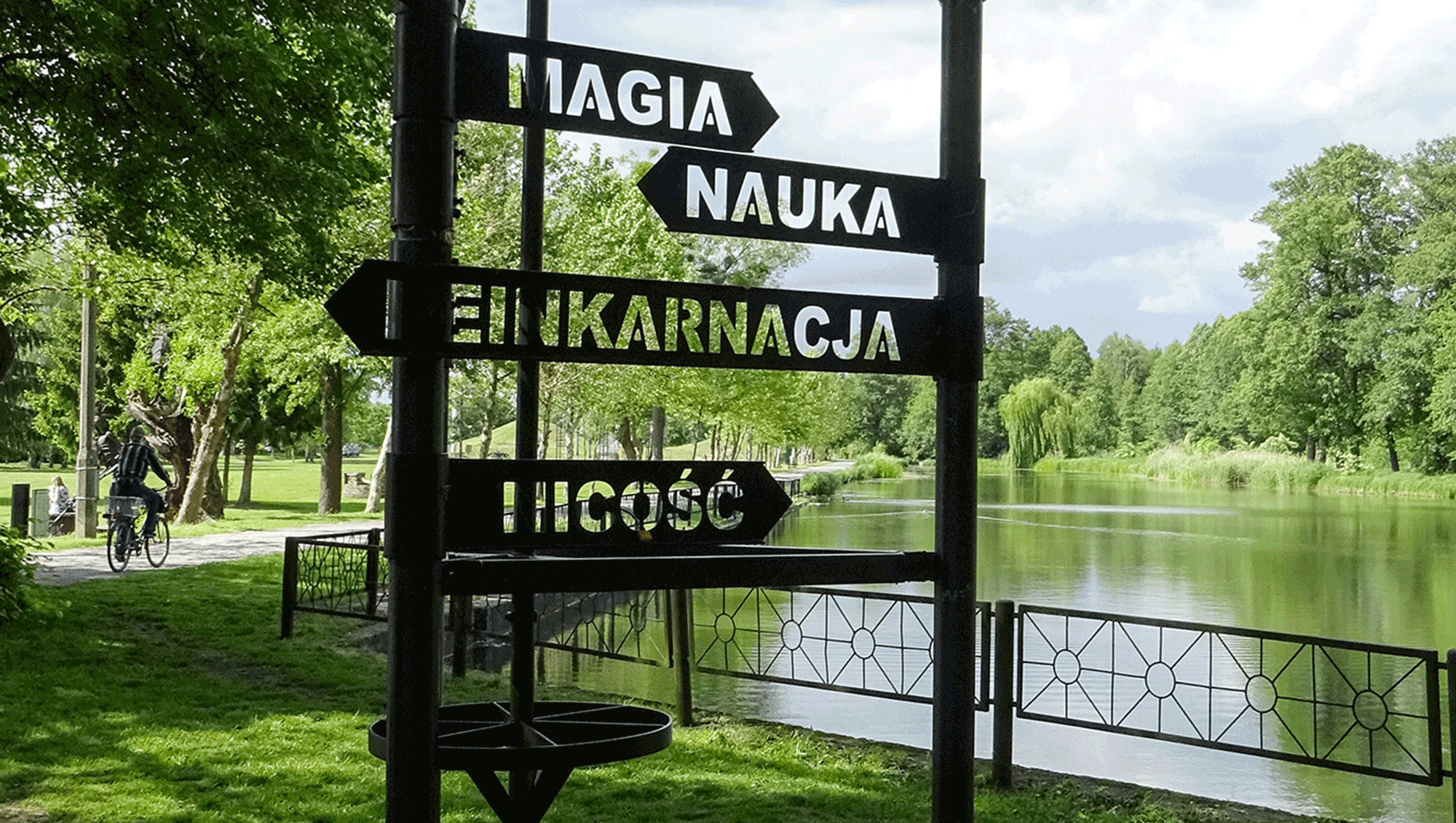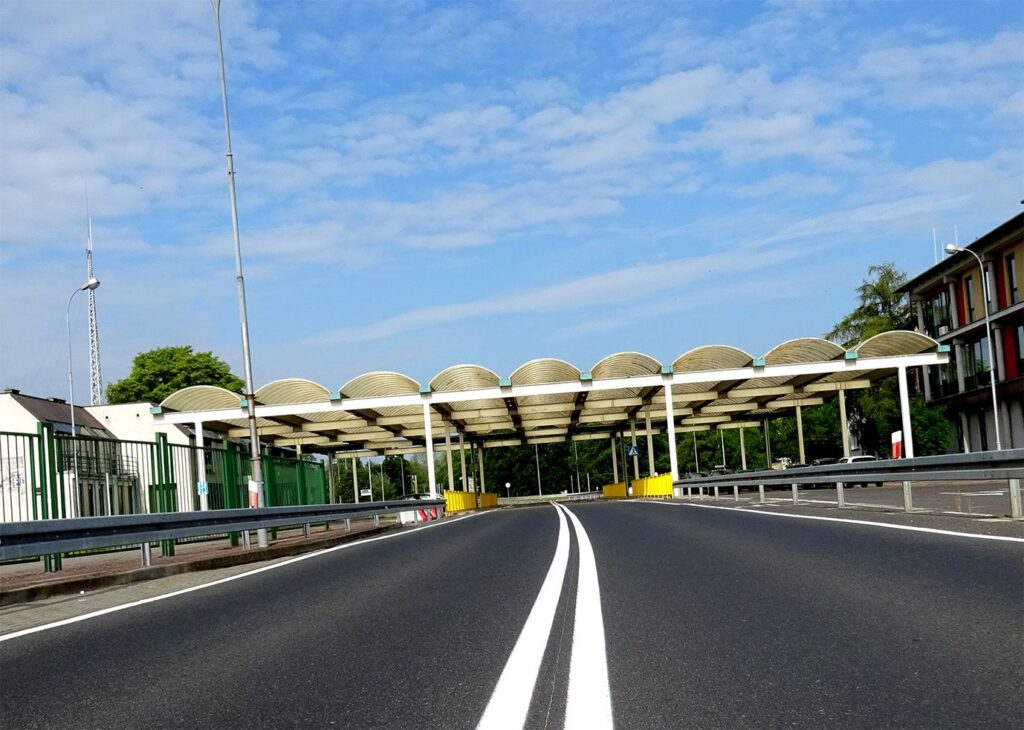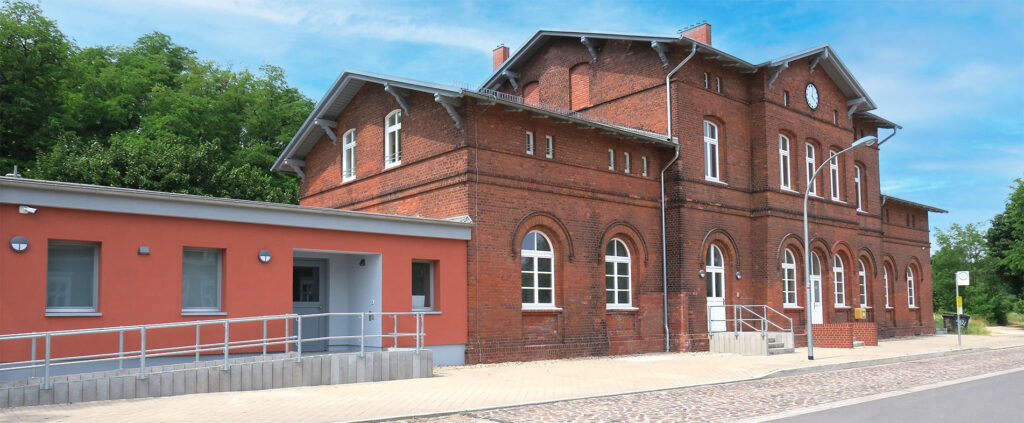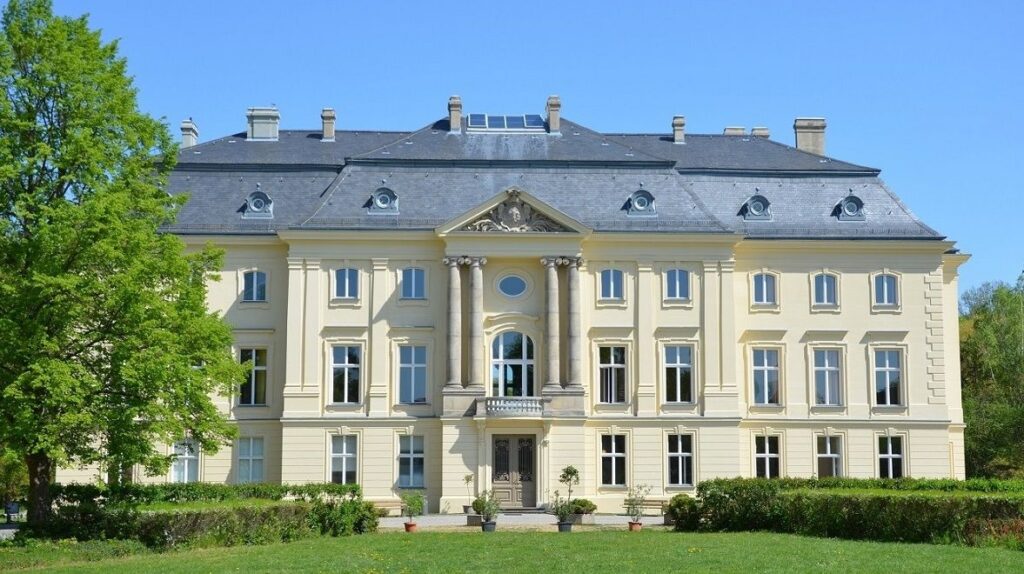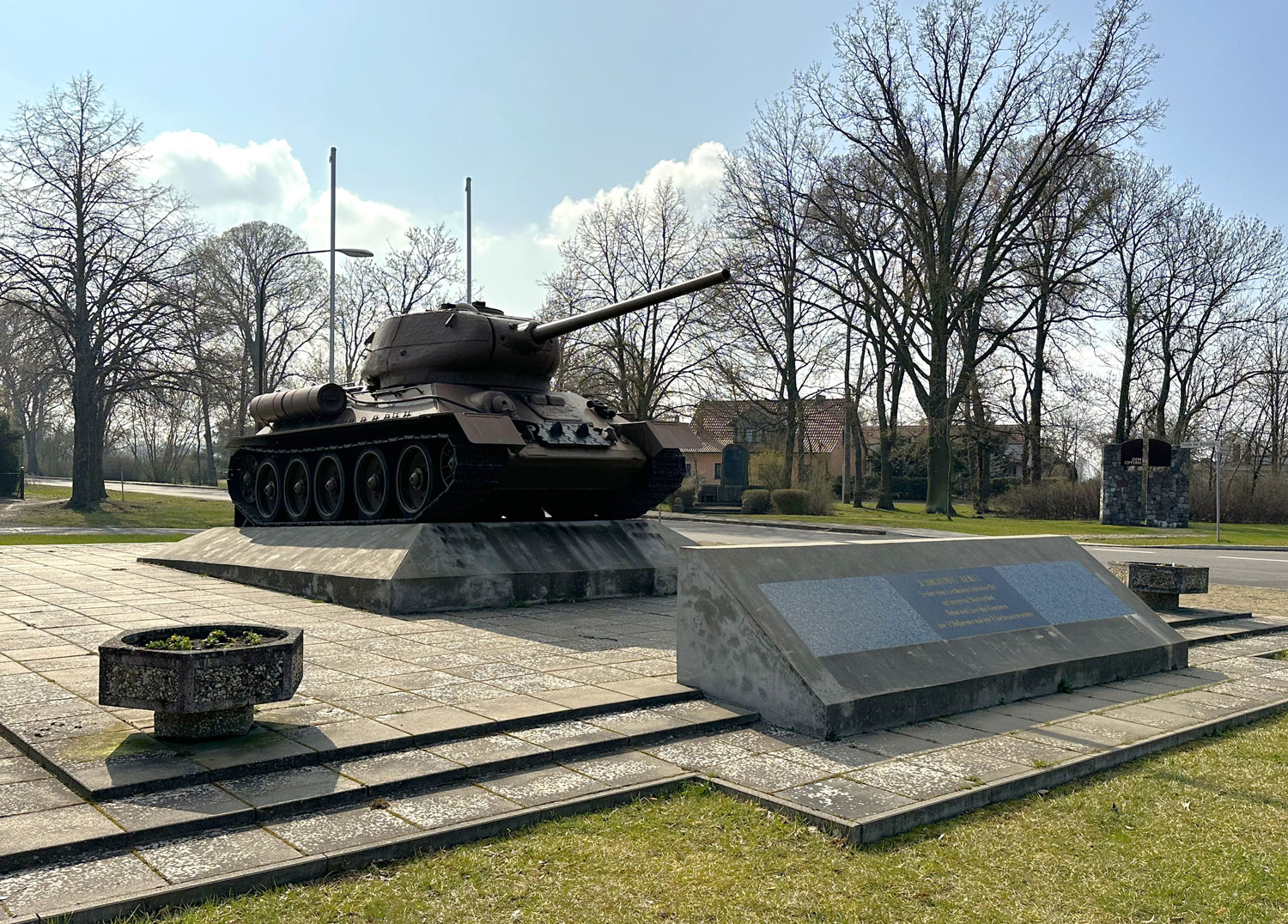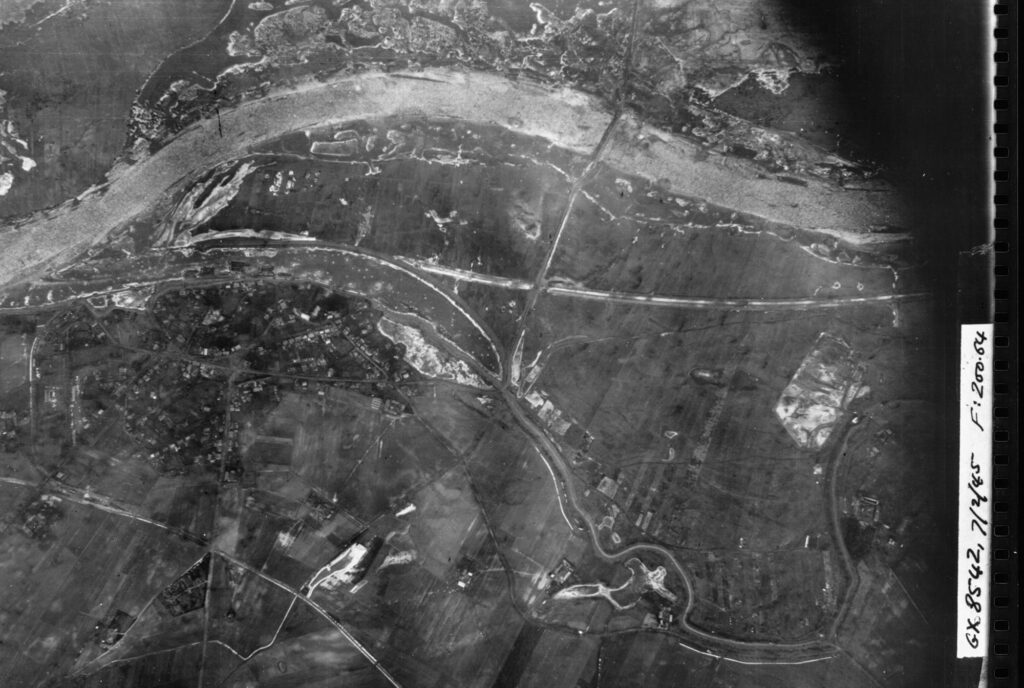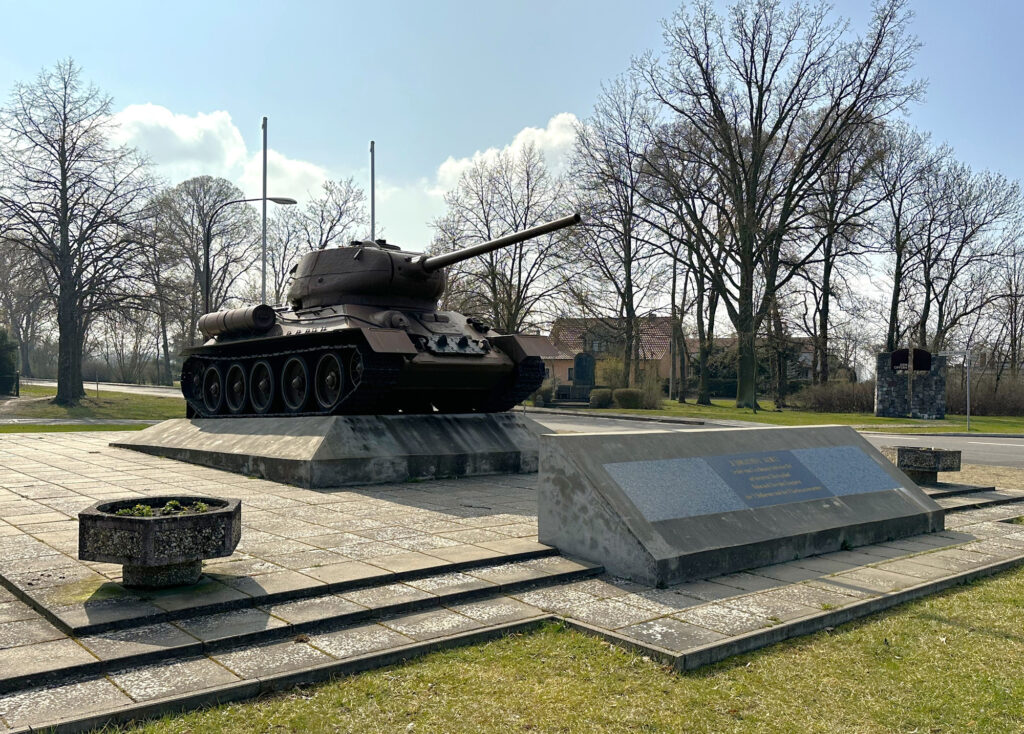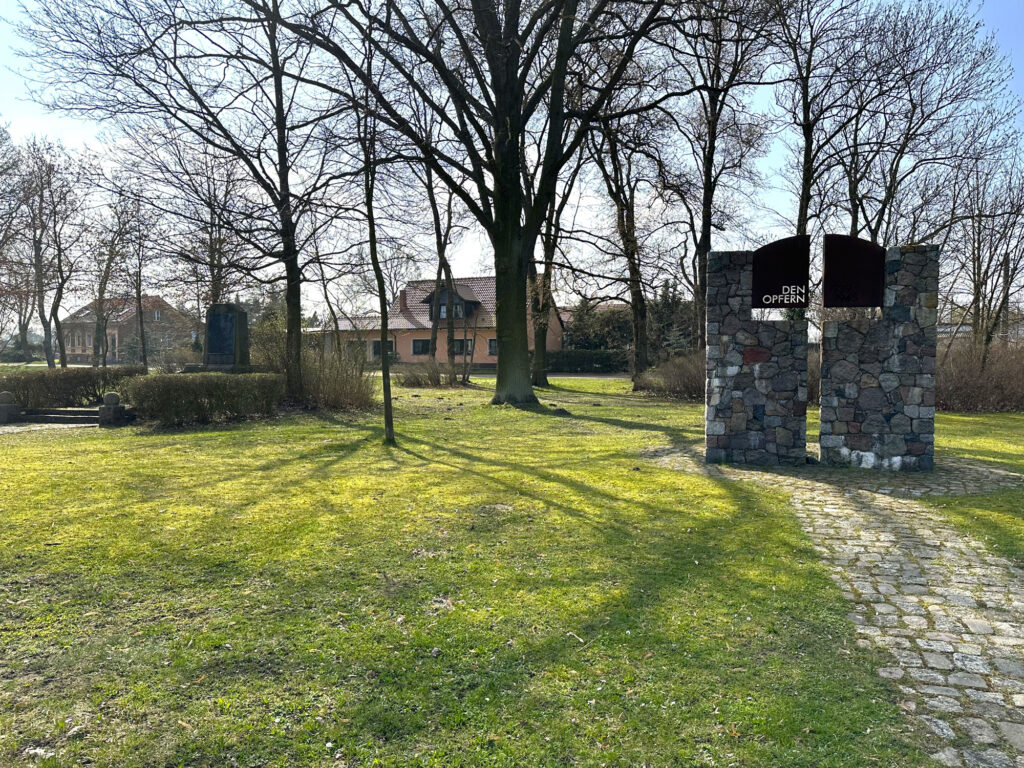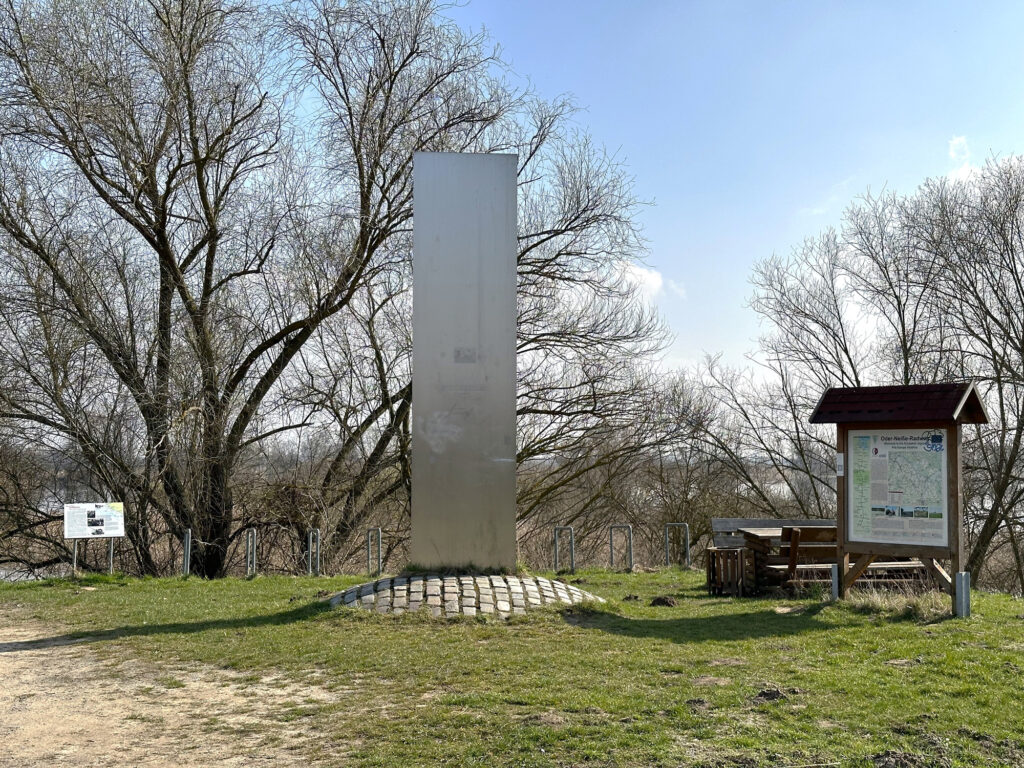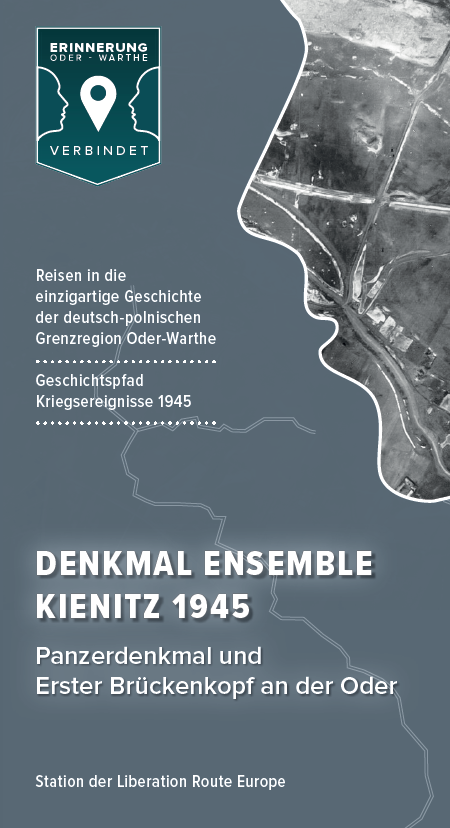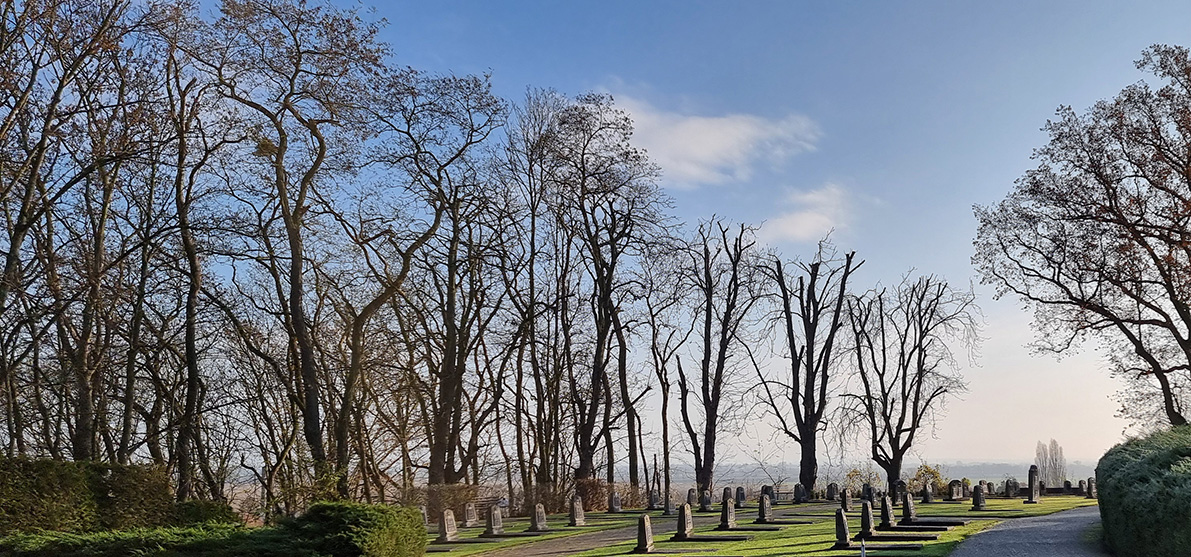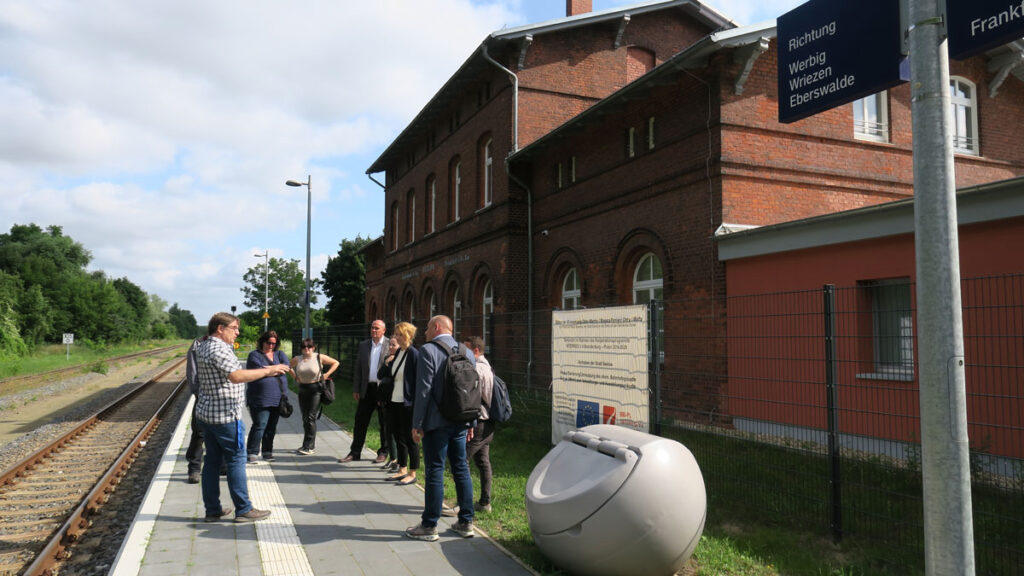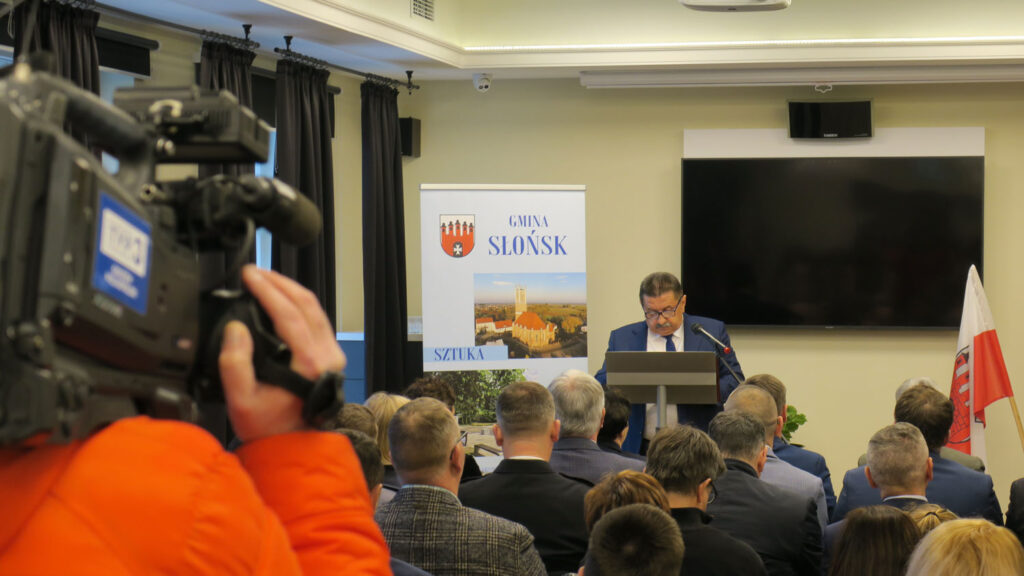Memorial and memorial site
Just 1 km south of Wuhden lies Klessin, today a district of Podelzig. The village of Klessin and the manor were completely destroyed in the spring of 1945. A natural memorial and remembrance site has been created on the grounds of the manor. In addition to the historical reappraisal, an interesting, scenic area has also been recultivated.
In the first days of February 1945, the Red Army overcame the frozen Oder between Küstrin and Lebus. This was followed by weeks of fierce fighting around the Reitweiner Sporn. The small villages of Wuhden and Klessin were heavily contested. Wuhden fell at the end of February. The pressure from three sides on Klessin increased and led to the encirclement of the village by the Soviet army. On 24 March, there was a violent breakout by the German soldiers who were still able to walk, and Klessin finally fell into Soviet hands. Many soldiers on both sides were killed or wounded in the seven weeks of fighting. Around 62,000 shells were fired at the Klessin area. Nowhere else in Germany was there such fierce and prolonged fighting over a settlement area. The village and estate of Klessin were razed to the ground. The population returning in May 1945 found unimaginable chaos. The earth was riddled with shells and criss-crossed by many trenches. The bodies of the fallen soldiers, decomposing in the fields and trenches, had to be buried.
80 years have passed since then. Until now, there was no memory of this dramatic event, of death and destruction. The site of the former estate was used as a rubbish dump in the GDR. In 2009, the Wuhdener Heimatverein e. V. acquired the site from the BVVG. Together with the Association for the Recovery of Fallen Soldiers in Eastern Europe (VBGO), the site has been searched for fallen soldiers from both armies since 2008. To date, around 250 German and Soviet soldiers have been recovered and buried. The ammunition recovery service and the German War Graves Commission accompanied the project for many years. At the same time, a concept was developed as to how the area could be designed as a place of remembrance and commemoration. The Wuhdener Heimatverein e.V. was supported by the VBGO, a planning office, several companies and many hard-working hands. The descendants of Otto von Albedyll, the owner of the manor, have also made generous donations to help fund the project.
The construction of the memorial and remembrance site "Klessin Castle Theatre of War" took around 15 years.
Metal sculptures were made from the war scrap. The members of the Wuhdener Heimatverein e.V. maintain the area on a voluntary basis together with other helpers. It was inaugurated in a ceremony on 20 May 2023. Since then, it has been open to the public and accessible to everyone. If you drive along Klessiner Straße in Podelzig, you can see the large portal of the castle, which was destroyed in the war and is made of Corten steel, from afar. On the right, a large steel plaque with laser-engraved lettering welcomes visitors. Opposite is the car park for buses and cars. To the left and right of the paved circular path, plaques and acoustic columns provide information about Klessin's history and the battle.
On 29 March 2025, a commemoration and remembrance event will take place in Klessin to mark "80 years since the end of the Second World War".
The story of Klessin as an audio contribution (Language: German)

Website Wuhdener Heimatverein e.V. with further information about the memorial site, the region and the voluntary work.

